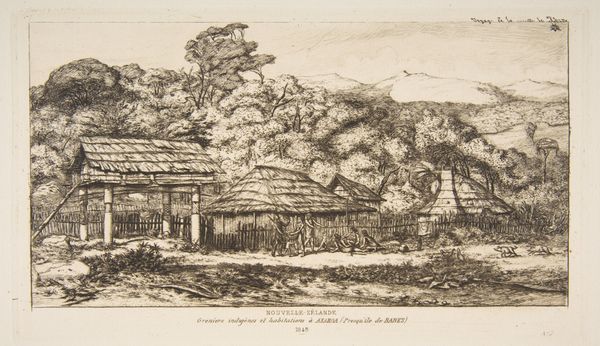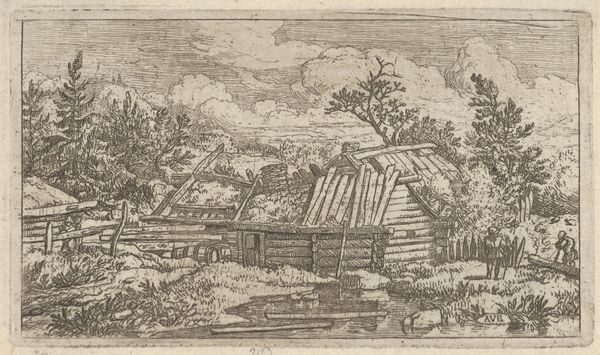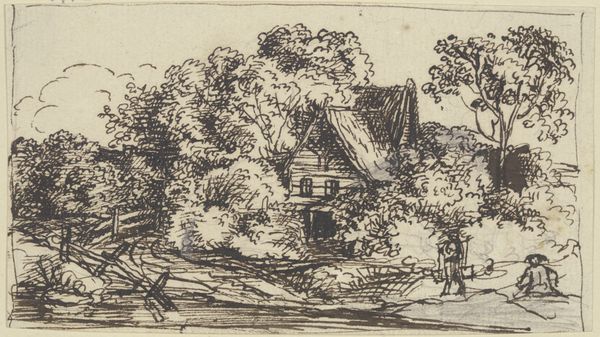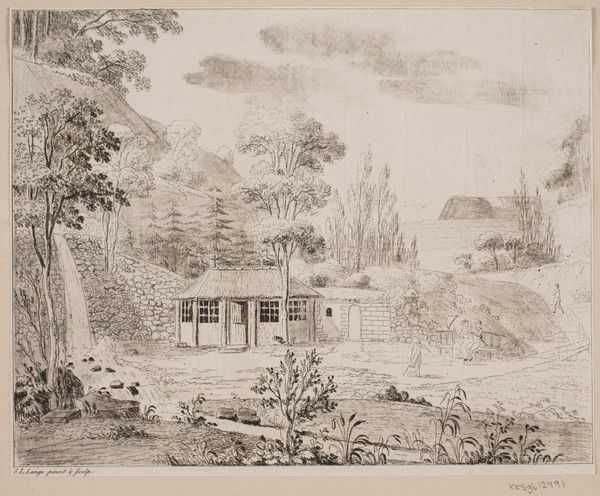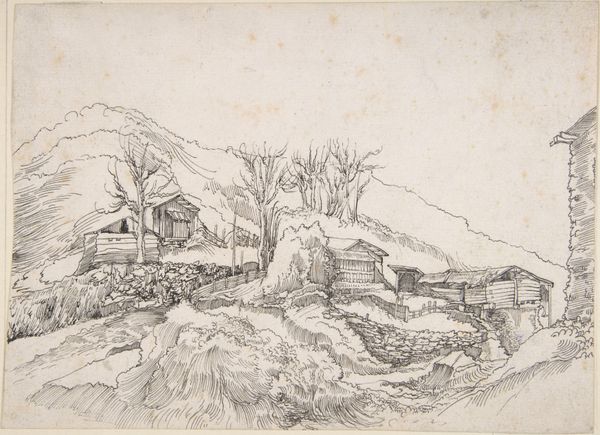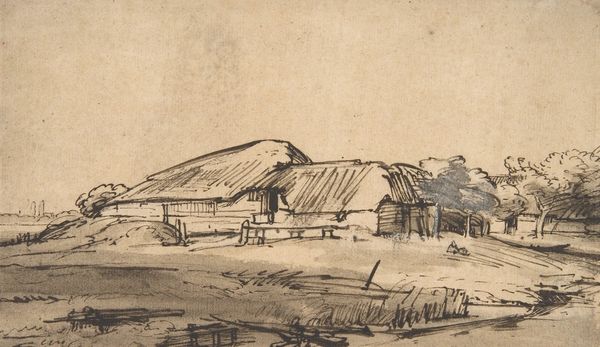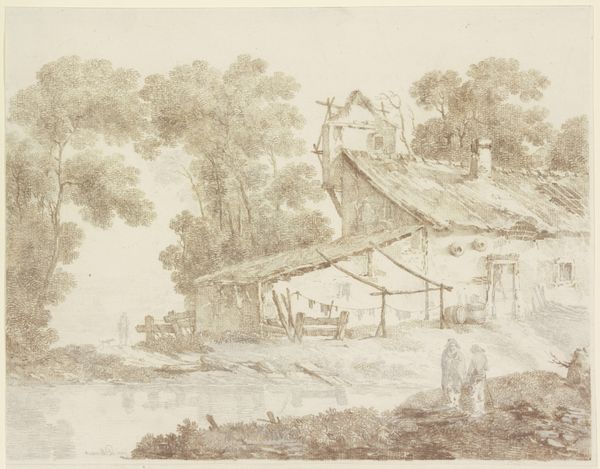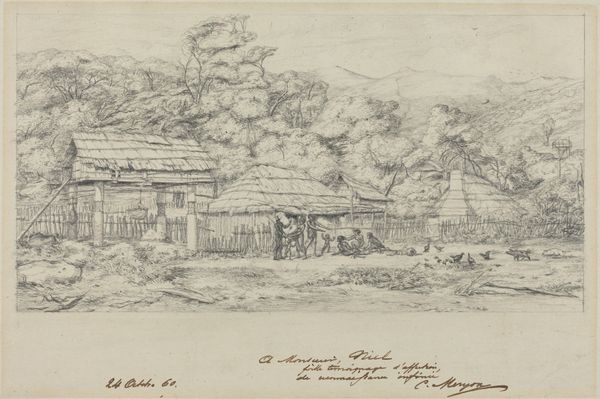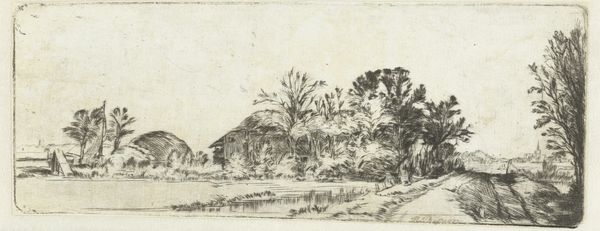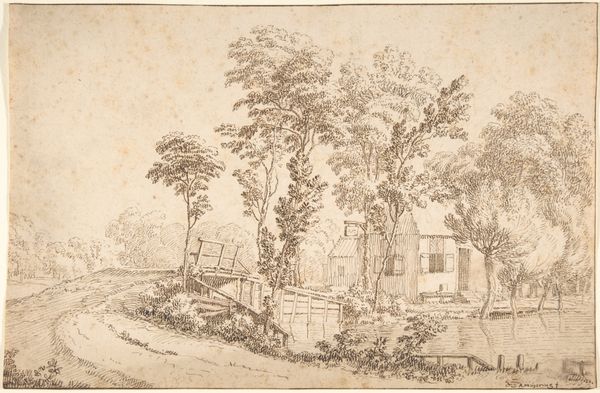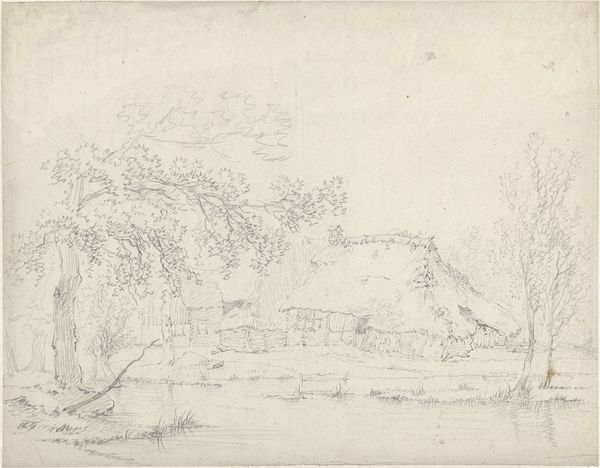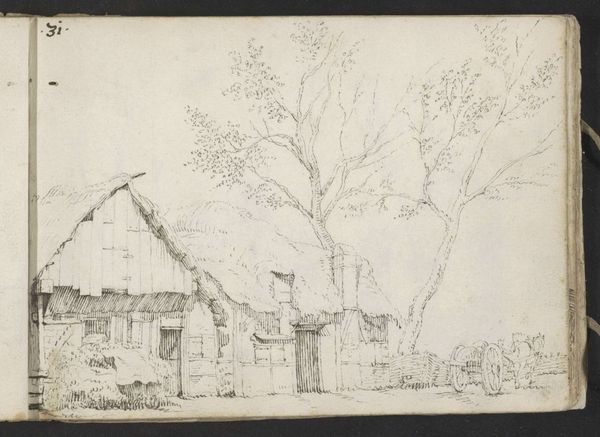
Greniers indigènes et habitations à Akaroa, presqu'Ile de Banks, 1845 (Native Barns and Huts at Akaroa, Banks' Peninsula, 1845) 1865
0:00
0:00
print, etching, paper
# print
#
etching
#
landscape
#
paper
Copyright: National Gallery of Art: CC0 1.0
Curator: Before us we have Charles Meryon's 1865 etching, "Native Barns and Huts at Akaroa, Banks' Peninsula, 1845." Editor: It’s a scene that evokes a sense of serene, isolated community. The textures, created by the etching technique, give a tangible quality to the buildings and foliage. Curator: Indeed, Meryon’s masterful use of line creates depth and imbues the dwellings with a sort of…hmmm…dignified austerity. The repetition of geometric forms—the roofs, fences—contribute to a structured composition, offset by the organic sprawl of the surrounding nature. Editor: Looking closer, one has to wonder about the context of such a portrayal. This image, supposedly documenting native structures, also speaks volumes about colonial presence and the act of observing, recording, and thus, in a sense, appropriating, an indigenous landscape. Curator: You are leading to...? Editor: I question whose narrative prevails here. Is this a romanticized view of indigenous life crafted for a European audience? Or is it a genuine attempt at ethnographic documentation? I believe we have to consider the colonial gaze inherent in such depictions and reflect on how the representation might overshadow the lived experiences of the Māori people in Akaroa. Curator: That said, Meryon's technical skill is undeniable. Consider how the interplay of light and shadow across the image generates volume. This use of chiaroscuro adds dramatic flare to what would be a simple arrangement of shape. Editor: Absolutely. His technique is compelling, but what narrative do we inherit through it? How might we approach this piece ethically, ensuring we are mindful of its place within historical power dynamics? Curator: A valid and poignant interrogation! Perhaps recognizing these tensions enriches our understanding of the image itself, a fusion of technique and contextual awareness. Editor: Precisely. By exploring its historical threads and implications we are allowing art to ignite crucial conversations about power, representation, and accountability.
Comments
No comments
Be the first to comment and join the conversation on the ultimate creative platform.

